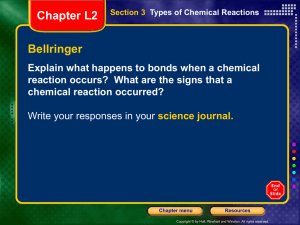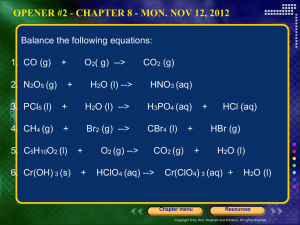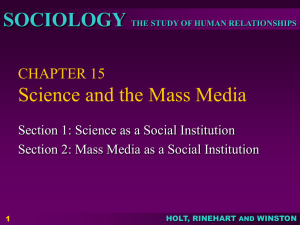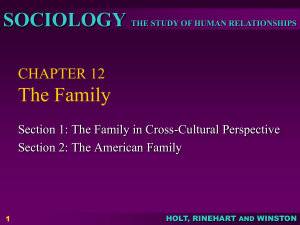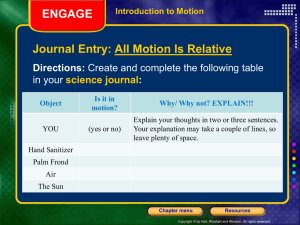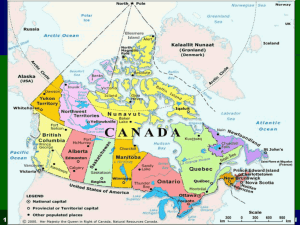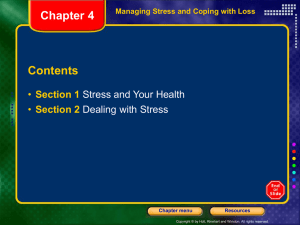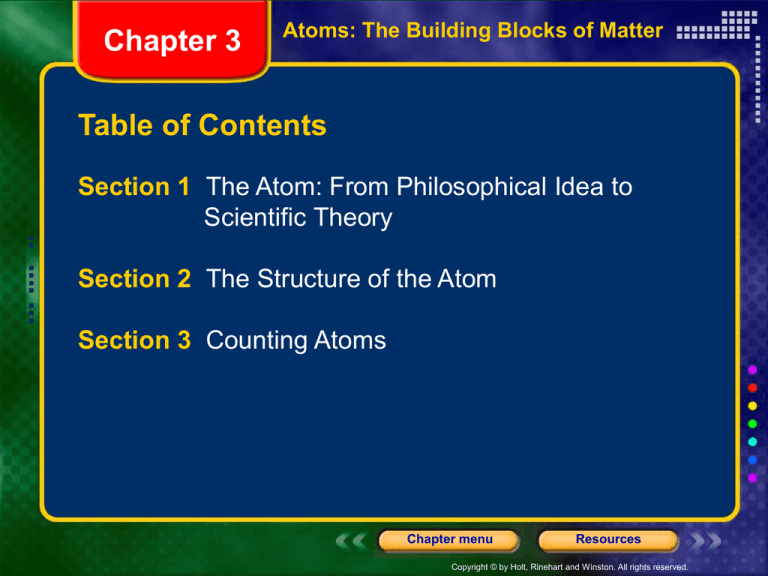
Chapter 3
Atoms: The Building Blocks of Matter
Table of Contents
Section 1 The Atom: From Philosophical Idea to
Scientific Theory
Section 2 The Structure of the Atom
Section 3 Counting Atoms
Chapter menu
Resources
Copyright © by Holt, Rinehart and Winston. All rights reserved.
Chapter 3
Section 1 The Atom: From
Philosophical Idea to Scientific Theory
Foundations of Atomic Theory
• Greeks- Democritus - atomos- “indivisible”
• Ideas based on opinion/thoughts
Chapter menu
Resources
Copyright © by Holt, Rinehart and Winston. All rights reserved.
Foundations of Atomic Theory
1790’s- quantitative analysis of chemical reactions
Several Laws that resulted from experimentation:
Law of Conservation of Mass
Law of Definite Proportions
Law of Multiple Proportions
Chapter menu
Resources
Copyright © by Holt, Rinehart and Winston. All rights reserved.
Chapter 3
Section 1 The Atom: From
Philosophical Idea to Scientific Theory
Law of
Conservation of
Mass- mass is
neither created nor
destroyed in
ordinary chemical
reactions.
Chapter menu
Resources
Copyright © by Holt, Rinehart and Winston. All rights reserved.
Law of Definite Proportions
A chemical compound always has the same mass ratio of
elements
Example: SiO2 silicon dioxide (sand)
46.74% silicon 53.26 % oxygen
Mass of desired element
Total mass of compound
X 100
Chapter menu
Resources
Copyright © by Holt, Rinehart and Winston. All rights reserved.
Chapter 3
Section 1 The Atom: From
Philosophical Idea to Scientific Theory
Law of multiple proportions: The same
two elements may combine in different
whole number ratios- will give two
different compounds
Chapter menu
Resources
Copyright © by Holt, Rinehart and Winston. All rights reserved.
Chapter 3
Section 1 The Atom: From
Philosophical Idea to Scientific Theory
Dalton’s Atomic Theory 1808- based on
experimental work• 1. All matter is composed of extremely small
particles called atoms.
• 2. Atoms of a given element are identical.
• 3. Atoms cannot be subdivided, created, or
destroyed.
• 4. Atoms of different elements combine in simple
whole-number ratios to form chemical compounds.
• 5. In chemical reactions, atoms are combined,
separated, or rearranged.
Chapter menu
Resources
Copyright © by Holt, Rinehart and Winston. All rights reserved.
Chapter 3
Section 1 The Atom: From
Philosophical Idea to Scientific Theory
Modern Atomic Theory
• Not all aspects of Dalton’s atomic theory have proven
to be correct. We now know that:
• Atoms are divisible into even smaller particles
• A given element can have atoms with different
masses.--- isotopes
Chapter menu
Resources
Copyright © by Holt, Rinehart and Winston. All rights reserved.
Chapter 3
Section 2 The Structure of the Atom
The Structure of the Atom
• An atom is the smallest particle of an element that
retains the chemical properties of that element.
Chapter menu
Resources
Copyright © by Holt, Rinehart and Winston. All rights reserved.
The Structure of the Atom
• Electrons- found by JJ Thomson (1897)
– Used cathode ray tube
– Negatively charged particles
– Mass is small 1/1837 mass of hydrogen atom
– Relative mass 0 amu (atomic mass unit)
Chapter menu
Resources
Copyright © by Holt, Rinehart and Winston. All rights reserved.
Chapter 3
Section 2 The Structure of the Atom
Cathode ray tube
Chapter menu
Resources
Copyright © by Holt, Rinehart and Winston. All rights reserved.
Chapter 3
Section 2 The Structure of the Atom
Discovery of the Electron- J. J. Thomson
Cathode Rays and Electrons
• Experiments in the late 1800s showed that cathode
rays were composed of negatively charged
particles.
• These particles were named electrons.
• “Plum-pudding” model- think chocolate chip cookie
Chapter menu
Resources
Copyright © by Holt, Rinehart and Winston. All rights reserved.
The Structure of the Atom
• Protons- found by Ernest Rutherford(1918)
– positively charged particles found in nucleus
– Relative mass 1 amu (atomic mass unit)
– # of protons- identifies element
Chapter menu
Resources
Copyright © by Holt, Rinehart and Winston. All rights reserved.
The Structure of the Atom
• Neutrons- found by James Chadwick(1932)
– neutral charge
– particle found in nucleus
– Relative mass 1 amu (atomic mass unit)
Chapter menu
Resources
Copyright © by Holt, Rinehart and Winston. All rights reserved.
Chapter 3
Section 2 The Structure of the Atom
Properties of Subatomic Particles
Chapter menu
Resources
Copyright © by Holt, Rinehart and Winston. All rights reserved.
Chapter 3
Section 2 The Structure of the Atom
Discovery of the Atomic Nucleus
• More detail of the atom’s structure was provided in
1911 by Ernest Rutherford and his associates Hans
Geiger and Ernest Marsden.
• The results of their gold foil experiment led to the
understanding that the atom is mostly empty space
with a small, dense, positive region.
• Rutherford called this positive bundle of matter the
nucleus.
Chapter menu
Resources
Copyright © by Holt, Rinehart and Winston. All rights reserved.
Chapter 3
Section 2 The Structure of the Atom
Gold Foil Experiment
Chapter menu
Resources
Copyright © by Holt, Rinehart and Winston. All rights reserved.
Chapter 3
Section 2 The Structure of the Atom
Gold Foil Experiment on the Atomic Level
Chapter menu
Resources
Copyright © by Holt, Rinehart and Winston. All rights reserved.
Atomic Models- Visual Overview
Dalton
Thomson
Rutherford
Today?????
Chapter menu
Resources
Copyright © by Holt, Rinehart and Winston. All rights reserved.
Determining the components of an atom
• Use the periodic table and given information in symbolic
form to determine:
– Atomic number
– Mass number
– Numbers of protons, neutrons and electrons
– Charge of an ion
Chapter menu
Resources
Copyright © by Holt, Rinehart and Winston. All rights reserved.
Symbol you will see to represent an element
A
Z
X
A – mass number
Z – atomic number
X- symbol of the element
Chapter menu
Resources
Copyright © by Holt, Rinehart and Winston. All rights reserved.
Chapter 3
Section 3 Counting Atoms
Atomic Number
• Atoms of the same element all have the same number
of protons.
• The atomic number (Z) of an element is the number
of protons of each atom of that element.
Chapter menu
Resources
Copyright © by Holt, Rinehart and Winston. All rights reserved.
Chapter 3
Visual Concepts
Atomic Number
Chapter menu
Resources
Copyright © by Holt, Rinehart and Winston. All rights reserved.
Chapter 3
Section 3 Counting Atoms
Mass Number
• The mass number is the total number of protons
and neutrons that make up the nucleus of an
isotope.
Chapter menu
Resources
Copyright © by Holt, Rinehart and Winston. All rights reserved.
Chapter 3
Visual Concepts
Mass Number
Chapter menu
Resources
Copyright © by Holt, Rinehart and Winston. All rights reserved.
Chapter 3
Section 3 Counting Atoms
Isotopes
• Isotopes are atoms of the same element that have
different masses.
• The isotopes of a particular element all have the same
number of protons and electrons but different numbers
of neutrons.
• Most of the elements consist of mixtures of isotopes.
Chapter menu
Resources
Copyright © by Holt, Rinehart and Winston. All rights reserved.
Chapter 3
Section 3 Counting Atoms
Designating Isotopes
• Hyphen notation: The mass number is written with a
hyphen after the name of the element.
uranium-235
• Nuclear symbol: The superscript indicates the mass
number and the subscript indicates the atomic
number.
235
92
U
Chapter menu
Resources
Copyright © by Holt, Rinehart and Winston. All rights reserved.
Chapter 3
Section 3 Counting Atoms
Sample Problem A
How many protons, electrons, and neutrons are there in
an atom of chlorine-37?
Chapter menu
Resources
Copyright © by Holt, Rinehart and Winston. All rights reserved.
Chapter 3
Section 3 Counting Atoms
Additional Problems
Xe-135 ? p ? n ? e
25
Mg +2 ? P ? N ? e
Chapter menu
Resources
Copyright © by Holt, Rinehart and Winston. All rights reserved.
Chapter 3
Section 3 Counting Atoms
Relative Atomic Masses
• The standard used to compare units of atomic mass is
the carbon-12 atom, which has been arbitrarily
assigned a mass of exactly 12 atomic mass units, or
12 amu.
• One atomic mass unit, or 1 amu, is exactly 1/12 the
mass of a carbon-12 atom.
• The atomic mass of any atom is determined by
comparing it with the mass of the carbon-12 atom.
Chapter menu
Resources
Copyright © by Holt, Rinehart and Winston. All rights reserved.
Chapter 3
Section 3 Counting Atoms
Average Atomic Masses of Elements
• Average atomic mass is the weighted average of the
atomic masses of the naturally occurring isotopes of
an element.
Calculating Average Atomic Mass
• The average atomic mass of an element depends on
both the mass and the relative abundance of each of
the element’s isotopes.
Chapter menu
Resources
Copyright © by Holt, Rinehart and Winston. All rights reserved.
Mass Spectrometerhttp://www.chemguide.co.uk/analysis/masspec/masspec.GIF
www.alevelchemistry.co.uk/Quizzes/images/mass_spectrometry
Chapter menu
Resources
Copyright © by Holt, Rinehart and Winston. All rights reserved.
Chapter 3
Section 3 Counting Atoms
Average Atomic Masses of Elements,
continued
Calculating Average Atomic Mass, continued
• Copper consists of 69.15% copper-63, which has an
atomic mass of 62.929 601 amu, and 30.85% copper65, which has an atomic mass of 64.927 794 amu.
Chapter menu
Resources
Copyright © by Holt, Rinehart and Winston. All rights reserved.
Chapter 3
Section 3 Counting Atoms
Relating Mass to Numbers of Atoms
The Mole- “The Chemist’s Dozen”
• SI unit to describe quantity.
• mole (abbreviated mol)
• Enables small particles to be counted
Avogadro’s Number
• Avogadro’s number
6.02 1023
– number of particles in exactly one mole
of a pure substance.
Chapter menu
Resources
Copyright © by Holt, Rinehart and Winston. All rights reserved.
Chapter 3
Section 3 Counting Atoms
Relating Mass to Numbers of Atoms,
continued
Molar Mass
• The mass of one mole of a pure substance is called
the molar mass of that substance.
• Molar mass is usually written in units of g/mol.
• The molar mass of an element is numerically equal
to the atomic mass of the element
Chapter menu
Resources
Copyright © by Holt, Rinehart and Winston. All rights reserved.
Chapter 3
Section 3 Counting Atoms
Relating Mass to Numbers of Atoms,
continued
Gram/Mole Conversions
• Chemists use molar mass as a conversion factor in
chemical calculations.
• For example, the molar mass of helium is
4.00 g He
or
1 mol He
1 mol He
4.00 g He
Chapter menu
Resources
Copyright © by Holt, Rinehart and Winston. All rights reserved.
Mole conversions
Molar mass in grams = 1 MOLE = 6.02 X1023 particles
Samples to try
moles and grams
moles and atoms
atoms and grams
Chapter menu
Resources
Copyright © by Holt, Rinehart and Winston. All rights reserved.
Chapter 3
Section 3 Counting Atoms
Sample Problems- Moles to grams
What is the mass of one mole of aluminum?
What is the mass of 1 mol of chlorine?
Chapter menu
Resources
Copyright © by Holt, Rinehart and Winston. All rights reserved.
Chapter 3
Section 3 Counting Atoms
Sample Problem –
What is the mass of .455 moles of silver?
What is the mass of 2.50 X 10-4 moles of lead?
Chapter menu
Resources
Copyright © by Holt, Rinehart and Winston. All rights reserved.
Chapter 3
Section 3 Counting Atoms
Sample Problem- Moles to atoms
How many atoms are in 3.45 moles of copper?
Chapter menu
Resources
Copyright © by Holt, Rinehart and Winston. All rights reserved.
Moles to grams
• How much lead should I mass to get 1.67 moles?
Chapter menu
Resources
Copyright © by Holt, Rinehart and Winston. All rights reserved.
Chapter 3
Section 3 Counting Atoms
Atoms to moles
How many moles of aluminum do you have with 4.75
1034 atoms of aluminum?
Chapter menu
Resources
Copyright © by Holt, Rinehart and Winston. All rights reserved.
Atoms to grams
• If I wanted 5.00 X 1015 atoms of gold, how many grams
would I need?
Chapter menu
Resources
Copyright © by Holt, Rinehart and Winston. All rights reserved.

